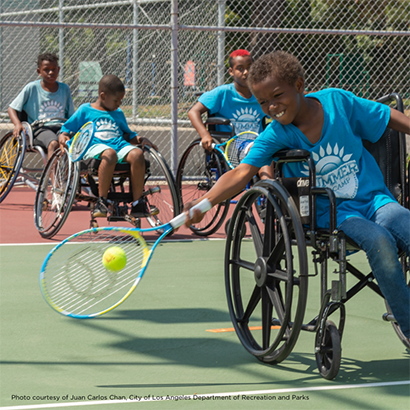
Physical activity is one of the best things people can do for their health. Being physically active can improve brain health, help manage weight, and improve the ability to do everyday activities. Through regular physical activity, people can also prevent or delay chronic diseases like heart disease, cancer and type 2 diabetes, plus decrease the risk of other heart disease risk factors like obesity.1 Despite the proven benefits of engaging in regular physical activity, many children and adults in the U.S. don’t get enough physical activity to receive these health benefits. As leaders in improving the overall health and well-being of their communities, park and recreation professionals are critical to closing this gap.
New Guidance to Increase Physical Activity
In 2021, the Community Preventive Services Task Force (CPSTF) introduced new guidance in its Community Guide, which is a collection of recommended, evidence-based public health interventions. Based on a systematic review of several dozen studies, the new recommendation states that park, trail and greenway infrastructure improvements combined with additional activities, like community engagement, structured programming, public awareness and other access enhancements, are effective strategies for increasing physical activity and the use of parks, trails and greenways for other health and social benefits. Park and recreation and public health professionals play an active role in ensuring all community members have equitable opportunities for physical activity – specifically in breaking down barriers in access for communities that have historically been excluded from parks, trails and greenways and the benefits they provide.
To support park and recreation and public health professionals advance the CPSTF’s recommendation, NRPA developed Active Parks! Implementation Guide. The guide provides an overview of the recommendation, including a step-by-step process professionals can follow to equitably increase physical activity, plus sample infrastructure improvement, community engagement, programming, and public awareness actions to get started. The guide also provides detailed guidance on how to center equity in this work to ensure that all people — especially people who have been historically excluded or face additional barriers to parks, trails and greenways — are authentically engaged and benefit from park, trail and greenway interventions. The guide supports the Centers for Disease Control and Prevention’s Active People, Healthy NationSM initiative which aims to help 27 million people become more physically active by 2027.
Using the Active Parks! Implementation Guide
Park and recreation and public health professionals can explore the Active Parks! Implementation Guide to:
- Deepen partnerships between parks and recreation and public health to advance shared goals that improve the public health and well-being of communities.
- Assess the current state of park and recreation systems to address inequities and injustices.
- Explore and identify community-driven solutions and actions that will increase physical activity, including infrastructure improvements and community engagement, programming, public awareness and other access enhancements.
- Develop an action plan and timeline, secure funding, and craft an evaluation plan to demonstrate the impact of park, trail and greenway interventions.
- Plan park, trail and greenway projects with long-term sustainability in mind.
- Dive into case studies from peers who have implemented components of the recommendation, resulting in increased physical activity and use of parks, trails and greenways.
Parks and recreation is vital to community health and well-being. Local park and recreation agencies connect every member of the community to essential programs, services and spaces that enhance quality of life. In this role, parks and recreation serves as a key social driver of health, creating opportunities for all people to thrive where they live, learn, work, play and age. To advance health equity, decrease health disparities and address disinvestment, it is critical for park and recreation and public health professionals to prioritize advancing the CPSTF’s recommendation, especially in areas and for people who historically have been excluded. This intentionality will help ensure all people can experience the physical, environmental, mental and social health benefits that parks, trails and greenways provide. Using the Active Parks! Implementation Guide, professionals can take action to address health equity in their communities.
PS: Love the implementation guide so much that you want to share it? Check out the Active Parks! Communications Toolkit to spread the word about the guide and ways it benefits the field!
Allison Colman (she/her) is NRPA’s Director of Health.
Teresa Morrissey (she/her) is an NRPA Program Manager.

